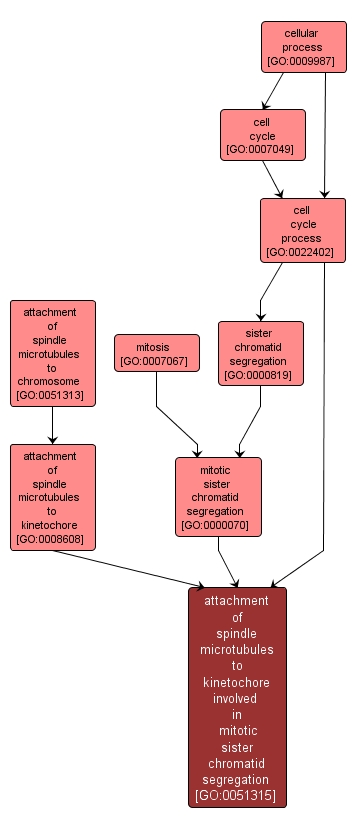GO TERM SUMMARY
|
| Name: |
attachment of spindle microtubules to kinetochore involved in mitotic sister chromatid segregation |
| Acc: |
GO:0051315 |
| Aspect: |
Biological Process |
| Desc: |
The cell cycle process whereby spindle microtubules become physically associated with the proteins making up the kinetochore complex during mitosis. During mitosis, the kinetochores of sister chromosomes are situated facing opposite spindle poles and bipolar attachment of the sister chromosomes to the spindle occurs. |
Synonyms:
- attachment of spindle microtubules to kinetochore involved in mitosis
- attachment of spindle microtubules to kinetochore during mitosis
|














